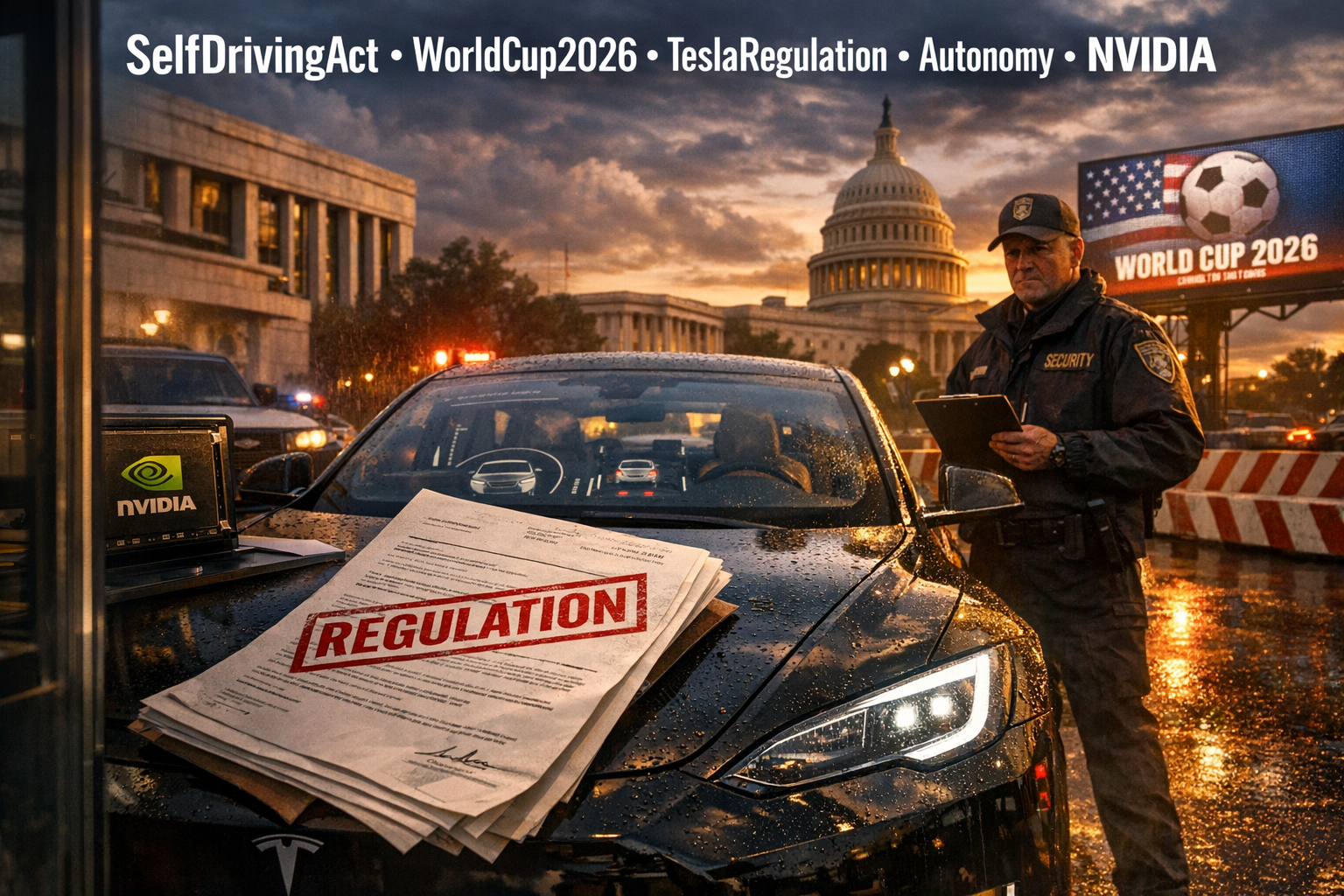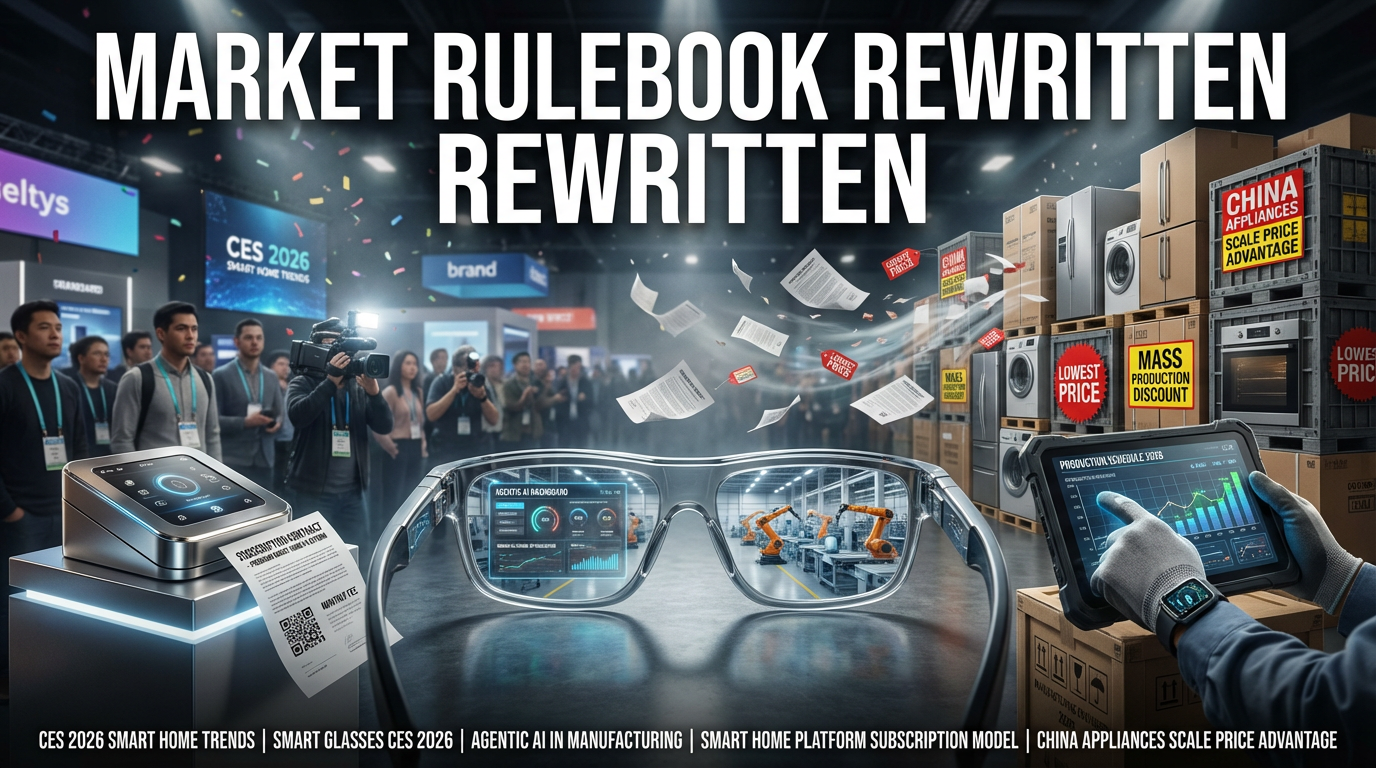● AI-Powered AR Glasses Unleash Economic Tsunami
The Advent of the Context-Aware AI Era and AR Glass Innovation
Early AR Glass Challenges and Technological Limitations (Early to Mid-2010s)
In the early 2010s, AR glasses were first introduced through attempts like Google Glass.
At the time, Google Glass utilized a prism display to show text messages or maps, but it failed to meet market expectations due to technical limitations such as battery life, camera quality, and lack of apps.
Microsoft’s HoloLens also did not gain significant popularity among early consumers due to its heavy device, limited field of view, and high price.
As such, AR glasses faced commercial difficulties in the past due to technological constraints and inadequate user experience, remaining a prime example that demands a cautious approach to new technology adoption from the perspective of the global economic outlook.
2nd Generation AR Glass: Fusion with Generative AI (Late 2020s ~ Present)
Recently, with the emergence of generative AI and the advancement of micro-display technology, AR glasses are being re-examined.
Big tech companies such as Meta, Google, and Apple are preparing new AR glass products and entering the global market competition.
Meta is developing AR glasses equipped with a small display as a successor to its existing Ray-Ban glasses, introducing ‘context-aware AI’ that combines with an AI voice assistant system to analyze users’ visual and auditory information in real time.
Google is also resuming AR glass development centered on the Android XR platform, exploring its potential not only as a smartphone accessory but also as a replacement device.
Such movements lead to high expectations for the ripple effects that the combination of AR and AI will have not only on technological innovation but also on the economy as a whole.
Generative AI and Context-Aware AI: Innovation in Real-time Information Provision
Generative AI can analyze information users see and hear in front of them in real-time and immediately provide necessary information.
For example, if a user walking by sees an unfamiliar restaurant sign, the AI recognizes it and provides personalized services such as menus, reviews, and recommendation information.
This context-aware AI integrated into AR glasses is expected to not only act as an assistant in our daily lives but also lead new innovations that differentiate it from existing physical AI.
In particular, in this process, key industries related to the global economic outlook, such as semiconductor technology, display technology, and AI software, will develop together, exerting complex effects on the economy as a whole.
Dramatic Advances and Challenges in Micro-display Technology
Micro-display, one of the core technologies for AR glasses, is becoming an essential component in the modern electronics industry.
Ultra-small chip-based OLEDoS displays leverage the advantages of existing OLEDs while sharing manufacturing processes with mobile devices, providing rapid response and high color accuracy.
Furthermore, LEDoS technology uses ultra-small LED bulbs for each pixel, achieving clear screens even outdoors and demonstrating superiority in power efficiency and durability.
However, challenges such as manufacturing difficulty and increased costs also exist, leading to expectations for the introduction of premium product lineups after 2027, driven by yield stabilization and price reduction.
This micro-display technology is closely linked to the semiconductor industry, drawing attention as one of the key keywords related to the global economic outlook.
Future Market Outlook and Economic Impact
According to market analysis, the AR glass market is projected to grow from 18.6 billion dollars in 2024 to 53.6 billion dollars in 2033.
Not only big tech companies but also China’s Huawei and Xiaomi are actively engaging in development, indicating that the competitive landscape will intensify.
The combination of generative AI and AR is a core business model in the era of digital transformation, holding significant potential to change consumer lifestyle patterns as an auxiliary or replacement device for existing smartphones and PCs.
Along with this, key keywords related to the global economic outlook, such as semiconductors, displays, and AI, are expected to interact and profoundly impact the global industrial structure.
Therefore, this innovation is projected to be a crucial turning point, triggering not just technological advancement but also a qualitative change across the entire economy.
AR glasses have overcome the technological limitations of the early 2010s and are beginning to experience a resurgence, showcasing 2nd generation models thanks to the advancement of generative AI and micro-display technology.
Major global IT companies are accelerating product development, and simultaneously, the real-time information provision capability through context-aware AI is drawing significant attention.
Furthermore, micro-display technologies like OLEDoS and LEDoS are expected to drive innovation in the semiconductor and display industries, significantly impacting the global economic outlook.
[Related Articles…]
- The Future of AR Innovation and Market Growth Outlook
- How AI Technology is Changing Daily Life and Economic Structures
*YouTube Source: [ 티타임즈TV ]
– The contextual AI race is coming.
● Billion-Dollar Brains Elite Spending Secrets Revealed
The Hidden Truths of High-Income Earners’ Spending Strategies and Economic Behavior Revealed by Neuroscience!
[00:00 ~ 00:19] Understanding the Brain’s Mechanisms and the Basics of Consumer Psychology
It explains the mechanism by which the brain’s dopamine system activates, triggering desire for objects, while simultaneously activating brain regions that cause pain associated with spending.This process suggests that impulse buying is a fundamental aspect of financial decision-making that extends beyond simple consumption to addictive behavior.This helps to understand how psychological factors as a consumer influence investment decisions and financial strategies in economic forecasting and global economic market analysis.
[00:26 ~ 01:44] Impulse Buying and Addiction: The Brain’s Reinforcement Learning
At the moment of impulse buying, the brain activates an immediate addiction mechanism, anticipating a reward.While this process provides short-term satisfaction, it actually leads to the formation of repetitive consumption patterns in search of better rewards.In investments and financial markets, similar principles may apply, where the pursuit of short-term gains hinders long-term stable performance.
[01:44 ~ 03:00] Impulse Control and Decision-Making Ability: The Role of the Brain’s ‘Prefrontal Cortex’
People who effectively control impulses don’t simply lack desires; rather, they have an excellent ability to transform their desires into long-term goals and rewards.The brain’s prefrontal cortex integrates two opposing neural signals—the desire to obtain and the pain felt when spending—to make a final decision.This mechanism suggests the importance of decision-making based on long-term market analysis and systematic financial strategies, even when making economic activities, such as investment decisions.
[03:00 ~ 04:47] The Impact of Early Impulse Control Experiences and Social Trust
Individuals who developed strong impulse control abilities from childhood strategically manage their consumption desires as adults.Social trust and small successful experiences (e.g., the marshmallow experiment) become the driving force for pursuing long-term rewards.In the global economy and investment markets, strategies based on systematic planning and trust, rather than short-term temptations, determine overall success.
[04:47 ~ 08:00] Neuroscience on Binge Eating, Dieting, and Appetite Control
Family environment, emotional instability, and the concept of ‘false hunger’ are revealed as causes of binge eating and diet failure.It analyzes cases where the brain’s AGRP neurons and appetite control mechanisms are distorted by environment and emotion, leading to unnecessary consumption behaviors.This perspective provides important insights for understanding irrational consumer choices in economic behavior theory.
[08:00 ~ 12:12] Environmental Control and Strategic Consumption: Balancing Brain and Economic Behavior
The habit of pausing to consider and adding items to a shopping cart instead of making an immediate purchase decision activates neural regulation mechanisms in the brain, aiding rational consumption.In other words, it is crucial to make decisions with long-term investment value and economic strategies (market analysis, finance, investment) in mind, rather than short-term impulses.By examining one’s spending patterns and avoiding unnecessary advertising stimuli, one can form healthier financial habits.
[12:12 ~ 13:39] Pursuing Higher-Order Goals and Healthy Consumption Habits
Instead of stimulating consumption, pursuing higher-order values such as lofty goals, self-development, art, or culture naturally regulates the brain’s appetite.This leads to long-term rewards in economic activities, based on wise finance, investment, and market analysis.By connecting the principles of stimulus and reward revealed in neuroscience with financial strategies, it reinterprets how we can make wiser consumption and investment decisions in our daily lives.
< Summary >It explains the mechanism by which impulse buying leads to addiction through the brain’s dopamine system and prefrontal cortex function.It highlights the impact of early impulse control experiences and social trust on long-term consumption and investment decisions.It emphasizes the importance of environmental control and pausing, showing that pursuing higher-order goals strengthens the brain’s ability to control consumption.All of this provides fresh insights into consumer behavior and financial strategies, intertwined with perspectives on economic outlook, global economy, finance, investment, and market analysis.
[Related Articles…]Brain Function and Investment Psychology
Consumption Patterns and Long-Term Financial Planning Strategies
*YouTube Source: [ 지식인사이드 ]
– 뇌과학적으로 고소득층 사람들은 물건보다 ‘이것’에 집착합니다. (김대수 교수 2부)
● Beijing’s Robot Blitz – Humanoids, AI Wars, Mall Invasion
China, AI Robot Revolution: From LimX Oli Humanoids to Robot Malls, an Innovative Leap in Future Economy
1. Launch of LimX Oli Humanoid and the Beginning of Development
The newly unveiled LimX Oli humanoid by LimX Dynamics is an innovative robot measuring 5 feet 5 inches with over 31 degrees of freedom.
This robot features a fully modular hardware and software architecture, differentiating it from the previous model, LimX CL1, and allowing for flexible application in various fields such as research, development, and education.
It can be optionally equipped with anything from two-finger grippers to fully functional hands with sophisticated five fingers, and boasts excellent compatibility with third-party peripherals.
The entire system integrates cloud-based APIs with local control, enabling rapid deployment, testing, and distribution, thereby generating economic value through the fusion of AI technology and robot innovation.
This technological prowess is expected to become a core driving force for global innovation and future economic transformation.
2. Autonomous Soccer Matches and Innovation in Sporting Events
In Beijing, the world’s first fully autonomous 5-on-5 humanoid soccer match is set to take place.
A large-scale event comprising 26 categories and 538 matches is prepared, with over 500 humanoid robots participating from 280 teams across 16 countries.
This competition goes beyond a mere sporting event, demonstrating the fusion of AI and robot technology, hinting at future paradigms for games and warfare, and is expected to open a new chapter for economy and innovation.
In particular, matches held in professional venues like the Panda Eye Stadium will vividly showcase to the world how China’s robot technology and AI innovation are being realized in reality.
3. Transformation of the Consumer Market: Opening of a Robot Mall
Beijing’s new robot mall operates similarly to a car dealership, showcasing and selling over 100 types of robots to general consumers.
The products sold here are diverse, ranging from mechanical butlers to humanoid replicas of historical figures, with prices from $278 to several million dollars.
The robot mall provides spaces for parts replacement, maintenance services, and hands-on experiences, presenting an innovative model where AI and robot technology are directly linked to the general consumer economy.
The Chinese government is supporting the robotics and AI sectors with over $20 billion in subsidies and is pushing for the establishment of a fund worth 1 trillion yuan, which is expected to become a future growth engine in the global economy.
4. AI-Based Drone Development and Research Innovation
Professor Peter Burke from the University of California conducted a project where an AI model autonomously built the entire control system for a drone.
This project generated over 10,000 lines of code in just 100 hours, 20 times faster than traditional human development time, and enabled the drone to be controlled independently via its own web dashboard.
As such, AI-powered R&D accelerates the development speed of robots and drones, demonstrating the potential to drive transformative changes across the economy.
Furthermore, this project also involved discussions on setting safety boundaries to ensure security and reliability, highlighting it as a significant economic and technological issue in the advancement of future technologies.
5. Key Implications and Global Economic Trends
China’s recent innovations in robotics and AI technology are redefining the future of the economy, industry, and society as a whole, beyond mere technological advancement.
The LimX Oli humanoid, autonomous competitions, robot malls, and AI-based drone development all revolve around the keywords of AI, robots, economy, innovation, and future, heralding a paradigm shift in the global economy.
The speed of technological advancement achieved in a short period and its wide range of applicability are likely to significantly impact policy decisions and industrial strategies of various countries.
Moving forward, it will be crucial to observe how not only China but the entire world responds to the development of AI and robot technology, and the ripple effects this innovation will have on the overall economy.
Each section, centered around the keywords of AI, robots, economy, innovation, and future, presents the direction for the global economy and future industries, emphasizing detailed content, development speed, and practical application cases of technology convergence that have not been covered in existing news or YouTube.
This will allow readers to grasp the latest technological trends and economic implications at a glance.
[Related Articles…]Latest AI Technology Trends
Analysis of Robot Market Innovation
*YouTube Source: [ AI Revolution ]
– China’s Shocking AI Robot Invasion Has Begun: New AI Robot Store, Oli Humanoid & More!
● AI Agents Revolutionize Cyber, Powering Economic Boom.
The Future of AI Agents and Cybersecurity Automation: Impact on the Global Economy and Technological Innovation
Comparing AI Agents with Traditional Cybersecurity Workflows
Traditional cybersecurity primarily relies on predefined rules, signature-based detection, and manually updated response procedures.
However, AI agents leverage Large Language Models (LLMs) to exhibit outstanding capabilities in natural language understanding and situational context awareness.
This significantly enhances real-time data analysis, dynamic automation, and threat detection speed.
Considering global market trends and technological innovation, these changes positively impact overall economic stability and financial market confidence.
Keywords such as economic outlook, global economy, market trends, financial markets, and technological innovation represent this shift.
Key Application Areas of AI Agents and Their Economic Implications
Threat detection methods have significantly evolved.
AI agents automatically identify malicious activities by analyzing raw event data, logs, and security advisories.
Compared to traditional manual verification processes, this shortens investigation times, increases cost-efficiency, and helps alleviate workforce shortages.
Furthermore, they are utilized in various areas such as phishing email analysis, malware identification, vulnerability management, and risk assessment, creating new economic value.
Real-time Cyberattack Response and Market Impact
AI agents perform real-time data collection, analysis, and execution decisions.
They quickly detect attack patterns and abnormal behaviors, preventing threats from escalating into actual incidents.
This capability drives technological innovation while minimizing market instability, thereby contributing to global economic stability.
Specifically, AI’s adaptability in dynamic threat environments can positively impact financial markets and corporate trust.
Limitations and Risk Management Strategies
Like all technologies, AI agents also inherently carry limitations and risks.
These include the possibility of LLM models generating incorrect information (hallucinations), the risk of malicious actors misusing AI, and the occurrence of unpredictable errors.
Therefore, automated execution authority for AI agents should be granted incrementally, and a dual verification system requiring final human expert confirmation should always be implemented.
Such risk management strategies are essential for reducing global economic uncertainty and enhancing market confidence.
Future Outlook: Collaboration Between Humans and AI
AI agents complement the work of human experts in cybersecurity, taking over repetitive and time-consuming tasks.
However, rather than aiming for complete automation, a hybrid model where humans and AI collaborate is most ideal.
This collaborative framework will provide sustainable growth momentum in terms of technological innovation and economic outlook.
Through real-time responses, continuous feedback, and retraining processes, AI will constantly evolve, positively impacting the global economy and financial markets.
< Summary >Unlike traditional cybersecurity systems, AI agents, powered by LLMs, enable dynamic and autonomous security operations.
They bring revolutionary changes to threat detection, phishing and malware analysis, and vulnerability management, significantly shortening investigation times.
However, limitations such as hallucinations and misuse risks exist, necessitating collaboration with human experts and a strict risk management framework.
These technological advancements are expected to positively impact global economic stability and financial market confidence.
Key keywords such as economic outlook, global economy, market trends, financial markets, and technological innovation support this.
[Related Articles…]
AI Agent Innovation Trends
Cybersecurity Automation Analysis
*YouTube Source: [ IBM Technology ]
– AI Agents for Cybersecurity: Enhancing Automation & Threat Detection


